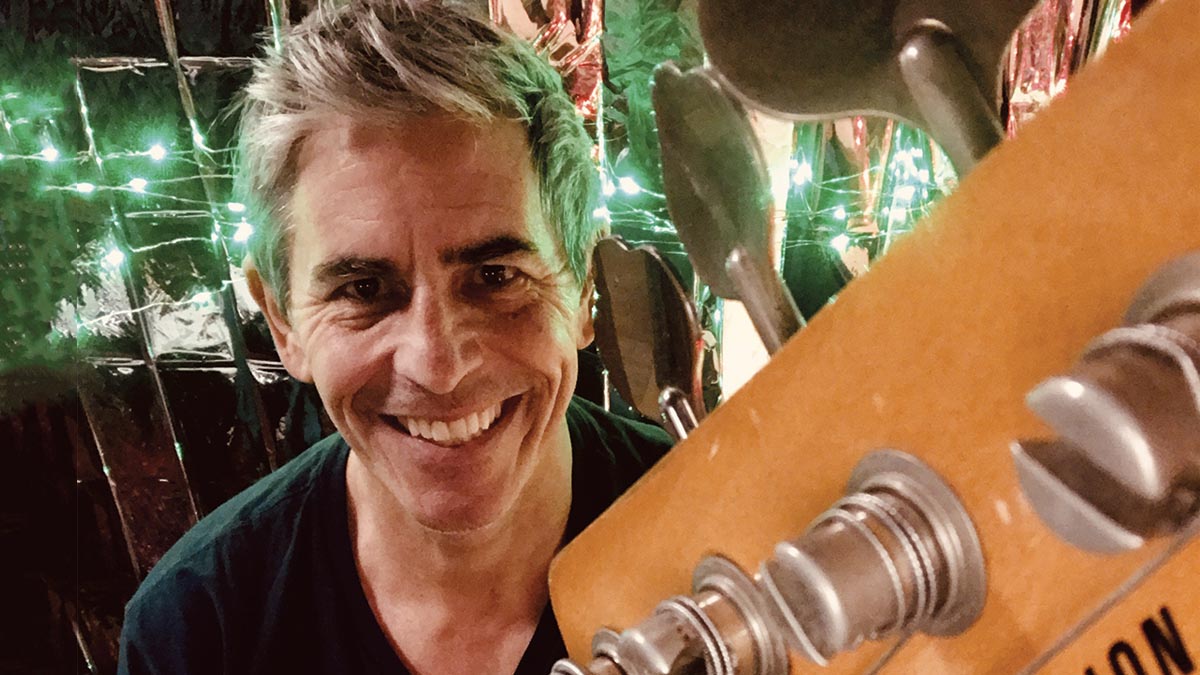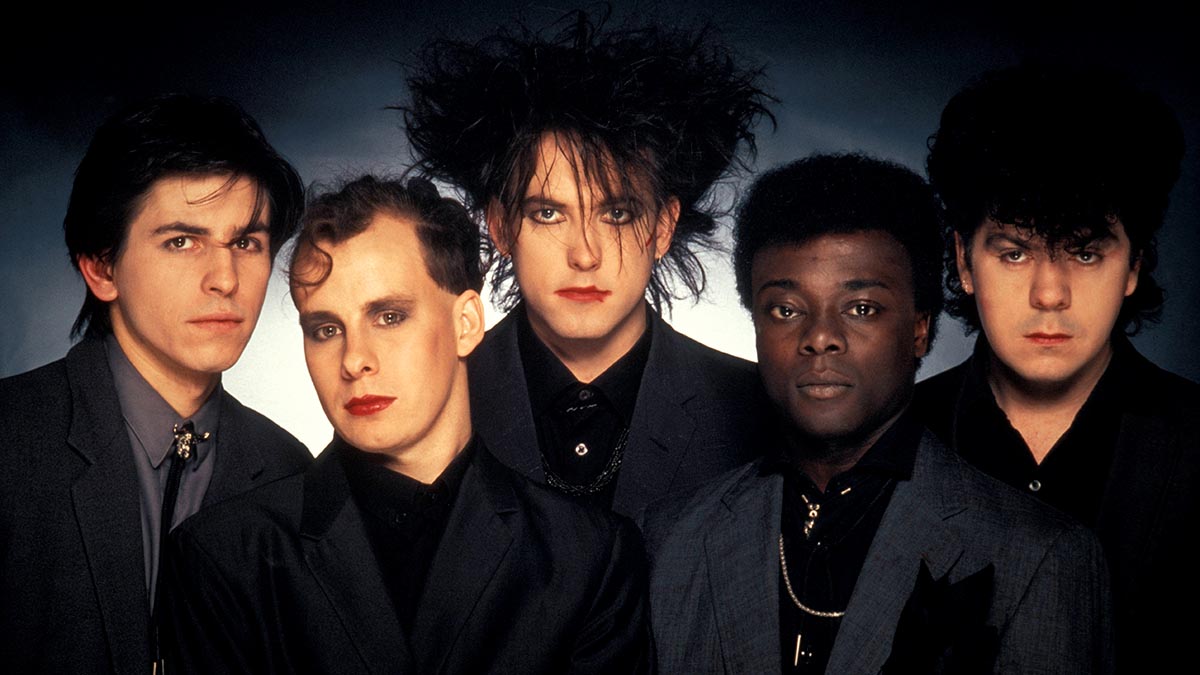Phil Thornalley recalls playing bass on The Cure's Love Cats: “I’m sure jazz players feel like crying whenever they hear that line!”
We speak to the man behind one of the most memorable bass parts of the '80s, and hear about his remarkable career as a “bass manipulator” with the likes of Bryan Adams and Natalie Imbruglia

Phil Thornalley, songwriter and bass player, laughs as he recalls the creation of a certain iconic bass part. Back in 1983, he was producing the British band The Cure when their longtime bass player Simon Gallup stepped away from the band for a while. In Gallup’s absence, a single called The Love Cats was given an unusual bass part.
“Robert Smith, the Cure’s singer, had shown me the principal bassline when we were on tour, and I’d learned it on electric bass. When we got to the studio to record it, I saw this double bass – and Robert said to me, ‘You’ve gotta play that!’ I had to get a tuner out and put some marks on the bass neck, because I had no idea where the notes were.
“When we started recording, I took the basic bass-line and, as the song progressed, I moved the line around for the chords. I also did a faux walking bassline at one point. Because of my limitations on double bass, I couldn’t play the whole part in one take, so I played each part over two tracks. I’m doing half of the line on one track, and the other half on the other.”
Although the single, released in 1983, was a hit, Thornalley cringes when he thinks what double bass professionals would have made of his bass part. “I’m sure jazz players feel like crying whenever they hear that line.
“In terms of spirit it’s right on, but in terms of technique and choice of notes, I’m flying by the seat of my pants. I’ve never played a double bass again since then. I was in The Cure for 18 months, and at the very last show I played with them in New York, I decided to throw in this disco run... which was totally inappropriate.”
Thornalley’s new album, a self-titled release under the name Astral Drive, conjures the spirit of Todd Rundgren in its throwaway, '70s-style approach to rock.
“I think of myself more as a bass manipulator,” he tells us. “I have no chops. You see videos on YouTube of people playing incredibly accurate and technical stuff with beautiful tones, and I have no idea how to do that, but I can play what you need for a record or a song – and more importantly, respect the singer.”
Get The Pick Newsletter
All the latest guitar news, interviews, lessons, reviews, deals and more, direct to your inbox!

Make no mistake, though – he’s still a huge fan of bass. “I’ve gotta tell you, I’ve been set up with so many interviews and podcasts, but this is the one I was most excited about because now I get my chance to talk about bass guitar,” he says. “I was 13 when I picked up the guitar. We had a band in the little village where I lived, but we had four guitarists... and as I was the youngest and smallest, they said ‘Why don’t you be the bass player?’”
You can’t talk about bass guitar without talking about James Jamerson. He was the complete opposite of everything that anybody ever teaches you about playing bass
This is a story that BP readers know well – a bass being thrust upon the extra guitarist – but if we’re lucky, the stars align and we end up falling in love with the low end, just as Thornalley did.
“My first bass was a Hofner, but when I was about 16, I got a Fender Precision. Going from playing a light semi-acoustic bass to this enormous heavy instrument was quite something. I was just navigating though music, and teaching myself with no formal musical education.
“I had the best influences, though: You can’t talk about bass guitar without talking about James Jamerson. He was the complete opposite of everything that anybody ever teaches you about playing bass – things like ‘Stick to a simple groove’ and ‘Don’t get in the way of the singer’.
“Jamerson was like, ‘I’ll play a harmony with the singer, and maybe I’ll play the root, but I’m gonna run up to it with a chromatic run, switch up the rhythm and make it swing!’ Nobody else could do that at the time. You hear a Motown record and you think, ‘What on earth is that guy doing with the bass?’”
He adds: “I also admired a great bass player in Todd Rundgren’s first band called John Siegler. He had a very groovy, very minimal style with some Jamerson moments in the fills, but the rest of the time he would keep it really simple.
“Those guys always had the bass mixed really loud, and in fact this is the sort of perspective you end up getting as a song producer. If you can get the bass to function, you can mix it really loud. I usually leave the bass as the last thing to produce, after everything is down.”
After The Cure, Thornalley became known as a member of the pop band Johnny Hates Jazz, of which he was a member from 1988 to 1992, and later as a songwriter. Among many other collaborations, he co-wrote, produced and played bass on the song Torn, a hit for European artists before the Australian singer Natalie Imbruglia made it famous in 1997; younger readers will also remember the British boy-band One Direction’s version of the song in 2012.
More recently, he played bass on tour with Bryan Adams. “It’s funny,” he muses. “My childhood neighbor, Mike Nocito, has always been a member of Johnny Hates Jazz. He’s the bass player and they’ve just been on tour with Level 42. We laugh about our history as bass players.
“He’s a producer that picked up the bass because no-one else would do it; I’m a songwriter that picked up the bass because no-one else would do it. We’ve both come to have a long career as bass players, but not like other bass players who are into Jaco Pastorius and can read music. Mike and I just picked it up.”
When I toured with Bryan Adams, I had no rehearsal
Thornalley’s story seems to be one of being constantly thrown in at the deep end. “When I toured with Bryan Adams, I had no rehearsal,” he remembers. “I turned up at an arena in 2016 with 8,000 people there, and had a run through in soundcheck – and then it was show time!
“You’re playing with muscle memory in that situation, so when Bryan would call out a song that I didn’t know, I could hear it. The key thing to remember, if you’re ever in front of thousands of people and you don’t know what to play, is – just don’t play!”
He adds: “Fortunately, this has only ever happened to me a couple of times over the years, when Bryan would call out old songs sometimes. Personally, I find that when you play really good songs, you get an instinctive sense of what the bass guitar should be doing, like when you listen to a Motown song, and you hear the bass wandering through it, so melodic and with so much information.
“Somewhere in the song there will be a triad, telling you if it’s major or minor or a seventh. At a really crucial moment, it will underline that tonality. Keep listening and you’ll definitely get it!”
- Astral Drive is out now on Lojinx.
“I asked him to get me four bass strings because I only had a $29 guitar from Sears”: Bootsy Collins is one of the all-time bass greats, but he started out on guitar. Here’s the sole reason why he switched
“I got that bass for $50 off this coke dealer. I don’t know what Jaco did to it, but he totally messed up the insides!” How Cro-Mags’ Harley Flanagan went from buying a Jaco Pastorius bass on the street to fronting one of hardcore’s most influential bands










